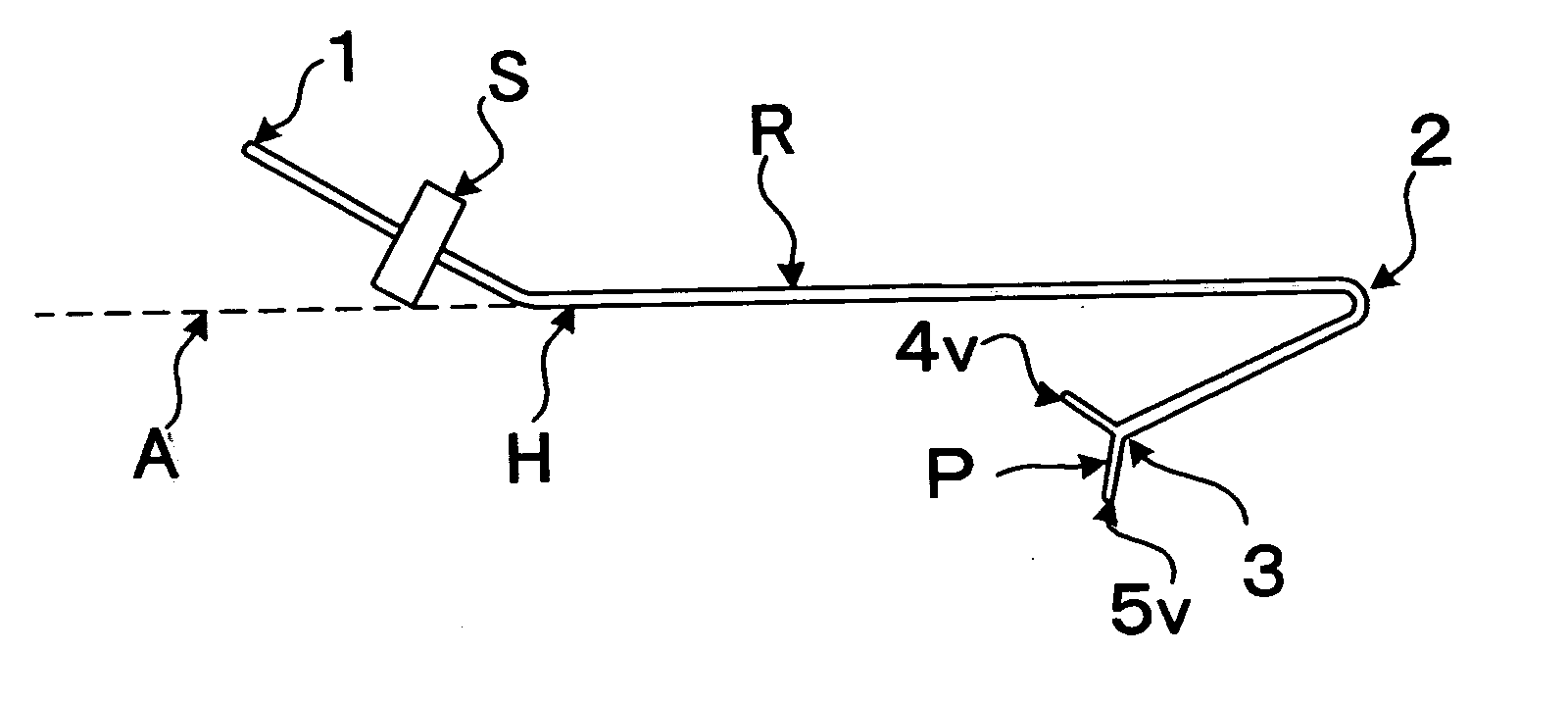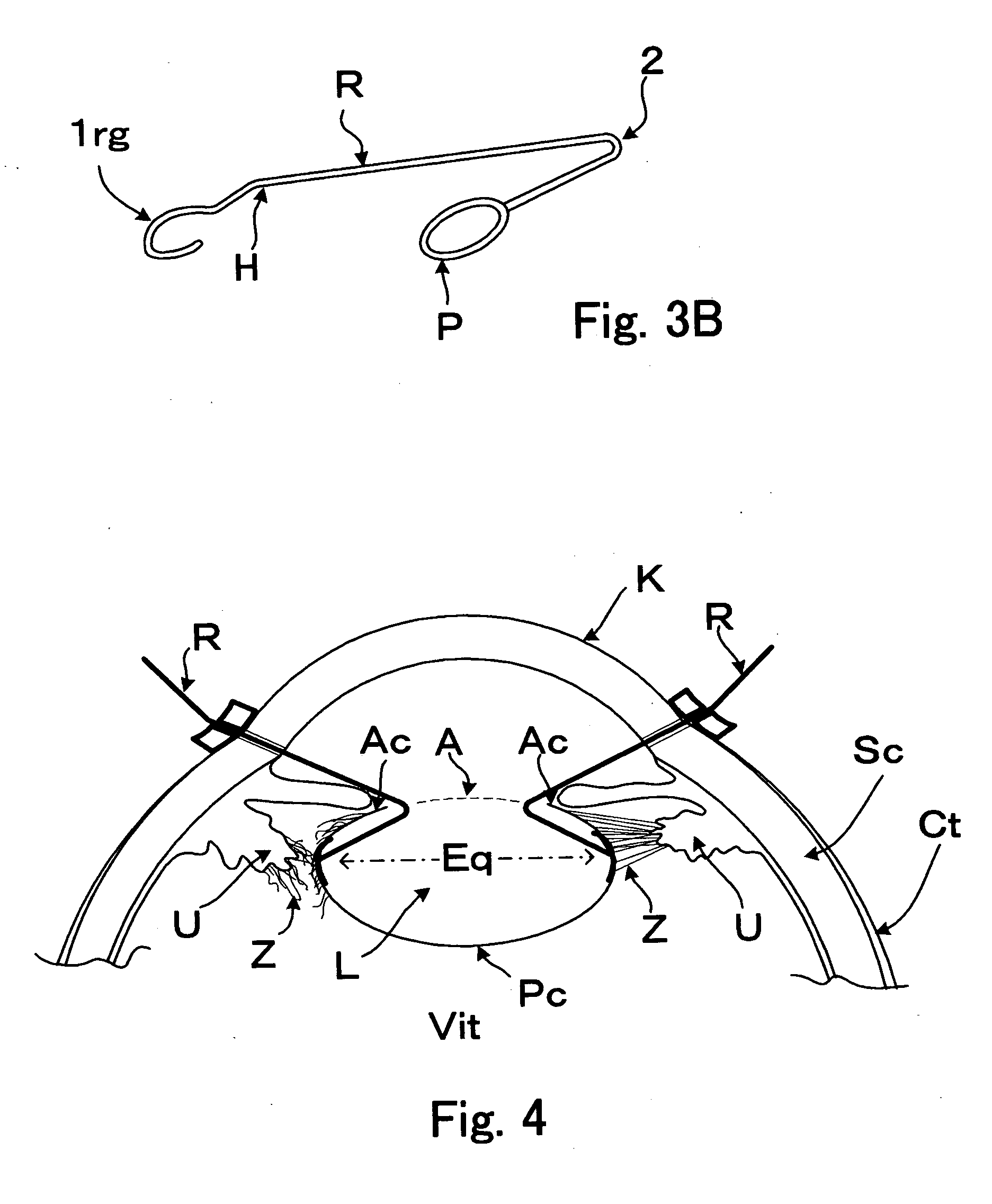Intraocular device for retaining a lens capsule
a technology of intraocular lens and lens capsule, which is applied in the field of intraocular lens implantation surgery, can solve the problems of inability to reattach the lens capsule, and increased risk of complications,
- Summary
- Abstract
- Description
- Claims
- Application Information
AI Technical Summary
Benefits of technology
Problems solved by technology
Method used
Image
Examples
Embodiment Construction
[0029] FIG. 1 shows a first embodiment of the device of the present invention. The device R can be used in ophthalmologic surgery as a surgical auxiliary device for cataract patients, particularly in the case of phacoemulsification / aspiration and intraocular lens implantation surgery.
[0030] In the following description, various dimensions and materials are described for the purpose of providing examples to better understand the embodiments. However, it is not intended to limit interpretation of the claims thereto.
[0031] The length from a first end 1 of a rod-shaped handle H of the device R to an opposite bent portion 2 is approximately 10 mm, and preferably at least 6 mm.
[0032] The bend of the bent portion 2 forms an acute angle with a branch 3. The branch 3 includes a tip 4v for the anterior capsule side, and a tip 5v for the posterior capsule side, respectively extending upwardly and downwardly relative to an axis A of the handle H. The length from this bent portion 2 to the branc...
PUM
 Login to View More
Login to View More Abstract
Description
Claims
Application Information
 Login to View More
Login to View More - R&D
- Intellectual Property
- Life Sciences
- Materials
- Tech Scout
- Unparalleled Data Quality
- Higher Quality Content
- 60% Fewer Hallucinations
Browse by: Latest US Patents, China's latest patents, Technical Efficacy Thesaurus, Application Domain, Technology Topic, Popular Technical Reports.
© 2025 PatSnap. All rights reserved.Legal|Privacy policy|Modern Slavery Act Transparency Statement|Sitemap|About US| Contact US: help@patsnap.com



